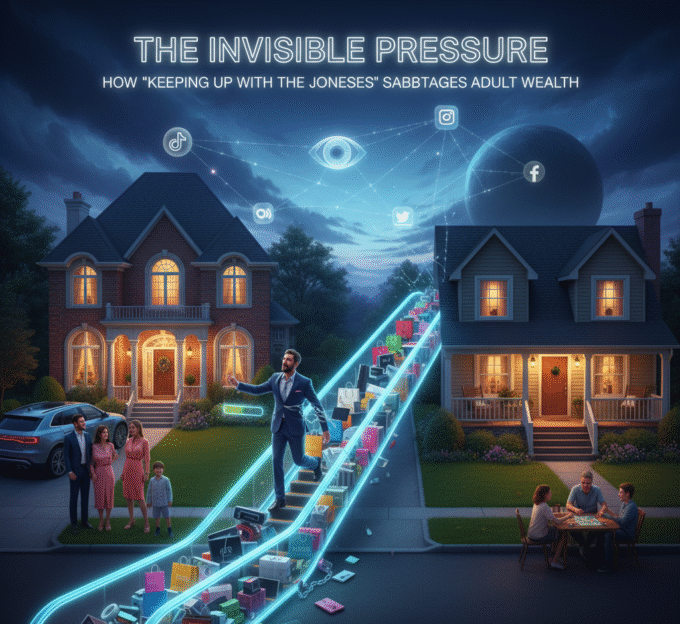It happens in the quietest moments, often unnoticed. You’re driving down the road, and from the backseat, a small voice announces, “We should go to that place! They have the happy toys.” Or you’re watching a family movie, and the commercial break ends, leaving behind a lingering, “Can I have that?” that feels more like a need than a want. I’ve seen it with my own nephew. He can’t read yet, but he can recognize a dozen logos. He doesn’t know what a budget is, but he has a very clear idea of what his money—or rather, his grandparents’ money—should be spent on.
This is the hidden curriculum of childhood. It’s not taught in schools, but its lessons are relentless and incredibly effective. We’re talking about advertising, of course. But I think we often underestimate its profound role in shaping a child’s earliest, most fundamental money mindset. It’s not just about selling cereal or plastic toys. It’s about establishing a core belief system around spending, value, and happiness itself.
The Want Engine: Building a Mindset of Scarcity
It’s funny, when you stop and really listen to a child after they’ve been immersed in ads, the underlying message isn’t about abundance; it’s about a strange kind of scarcity. There’s always something missing, something new that has just appeared that is absolutely essential for their contentment. The toy they loved yesterday is suddenly obsolete because the commercial for the newer, shinier version is now airing.
Also read: Best Tips to Grow Your Money with a Savings Account
This creates a mental model where happiness is always one purchase away, and yet perpetually out of reach. The goalposts are constantly moving. The feeling it cultivates isn’t joy, but a low-grade anxiety. A sense of being behind. I remember this feeling from my own childhood, that frantic need to have the latest trend to simply feel okay, to feel current. It’s a brutal way to grow up, if you think about it. Your sense of peace becomes tied to things you often don’t need and can’t afford.
The ads, you see, are engineered to create a problem and then present themselves as the only solution. Are you bored? This video game will fix it. Are you unpopular? These shoes will help. It’s a brilliantly simple, and sadly effective, formula. It teaches kids to look outward for solutions to internal feelings. And it positions money as the key that unlocks the solution. The subtle lesson is that your own resources—your imagination, your creativity, your friendships—aren’t quite enough. You need the product.
The Illusion of Value and the Disappearing Act of Joy
Perhaps one of the most damaging lessons ads teach is a distorted sense of value. The value of a product in a commercial isn’t in its durability, or its materials, or its functionality. The value is in the social capital it promises, the fleeting thrill of ownership, the moment of unboxing. The focus is entirely on the payoff, never the process of earning or the longevity of the item.
This creates a weird disconnect. A child will beg for a toy that costs $30, driven by a commercial that made it look like the key to a magical adventure. But then, once the toy is in their hands, the magic often evaporates quickly. The plastic is flimsy, the game isn’t as exciting as it seemed, and it’s discarded in a corner within a day or two. The joy was in the *wanting*, not the *having*.
And this is a crucial financial lesson, just a terribly misleading one. It teaches that value is transient and emotional. It discourages the consideration of cost-per-use, of long-term satisfaction, of practical worth. The ad’s job is done the moment the purchase is made. The aftermath—the disappointment, the clutter, the wasted money—isn’t its concern. But it’s the child who internalizes this cycle: intense desire, brief acquisition, and then a hollow feeling that can only be filled by the next new thing. It’s a treadmill, and they learn to run on it before they even understand what a treadmill is.
The Silent Language of Brand Loyalty
It starts early, this brand awareness. It feels innocent at first—a preference for a certain character, a gravitation toward a specific color scheme. But what’s really happening is the early formation of brand loyalty. Advertising isn’t just trying to make a sale today; it’s trying to make a customer for life. It’s planting a flag in a child’s mind, associating a logo with feelings of safety, fun, and belonging.
Think about it. A child who grows up with a specific fast-food clown as their friend, or a certain cartoon animal on their breakfast cereal, is forming neural connections between that brand and positive childhood emotions. Decades later, as an adult with their own income, that deep-seated, nostalgic connection can still subconsciously influence their spending choices. They might choose that brand out of a crowded field of options, not because it’s the best or healthiest or most cost-effective, but because it *feels* familiar. It feels like comfort.
This is the long game of advertising to children. It’s not a one-off transaction. It’s about building a psychological foundation that future marketing can easily build upon. The lesson for the child is that sticking with what you know, with what feels emotionally safe, is a good strategy. It discourages comparison shopping and critical evaluation later in life. Why research other options when you already have a “friend” in the market?
Rewriting the Script: It’s Not About Shielding, It’s About Equipping
So, what do we do? As I see it, building a moat around our kids to keep all ads out is impossible. The messages seep in through cracks we didn’t even know existed. The answer, I think, isn’t to hide them from the world, but to arm them with a better compass to navigate it. It’s about becoming the counter-narrative.
This starts with pulling back the curtain. We can demystify the process. When an ad comes on, we can casually comment on its techniques. “Wow, they used a lot of cool music to make that look exciting, didn’t they?” or “Notice how everyone in that ad is laughing? They’re trying to make us think that cereal will make us that happy.” It’s not a formal lecture, just an observation. You’re giving them the vocabulary to understand they are being persuaded.
Also read: The Unconventional Playbook: Reinventing Your Real Estate Business in the U.S. Market
Then, we can actively create experiences that redefine value. Instead of a trip to the mall for entertainment, maybe it’s a trip to the library or a park. We can involve them in real-world financial decisions that have nothing to do with toys. “We have $50 for groceries this week. Should we get the branded cookies, or the store-brand ones and use the saved money to get extra fruit?” This introduces the concept of trade-offs and conscious choice—a concept completely absent from advertising.
Finally, and this might be the most important part, we can help them connect money to effort. An allowance tied to small chores, even simple ones, forges that critical link. That $5 isn’t just a magical token from a parent’s wallet; it represents the time they spent helping to set the table or put their laundry away. When that money is theirs, earned through a small effort, they suddenly become much more thoughtful about how they spend it. The $15 toy isn’t just a toy anymore; it’s three weeks of making their bed. That’s a calculation that no ad can easily overwrite.
It’s an ongoing conversation, really. Some days you’ll feel like you’re getting nowhere. But other days, you’ll hear your child pause during a commercial and say, “They’re just saying that to sell it, right?” And in that moment, you’ll know a small victory has been won. You’re not just fighting against the influence of advertising; you’re building something more resilient in its place. You’re helping them build their own financial intuition, one conscious thought at a time.















Leave a comment